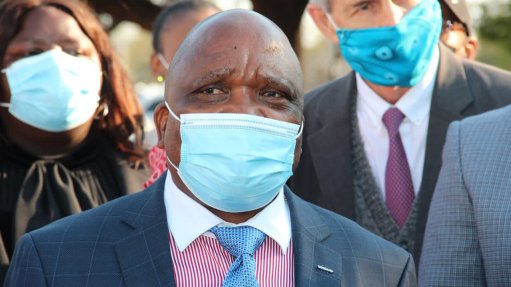
Health Minister Dr Joe Phaahla
Health Minister Dr Joe Phaahla highlighted on Friday that although there is a steady decline in weekly and daily infections, infection rates and hospital admission rates, there is still no room for complacency because a 12% positivity rate is still very high.
Phaahla said South Africa was steadily getting out of the grip of the Covid-19 third wave driven by the Delta variant. Nationally there had been a 24% drop in new cases compared to the last seven days. He said Gauteng and Limpopo had officially exited the third wave.
Phaahla said over this period the highest case incidences had been in the Northern Cape province, which he said remained protected in terms of Covid-19 infections.
The Northern Cape province is followed by Free State and then KwaZulu-Natal (KZN) in terms of cases per 100 000 population.
Phaahla explained that hospitalisation had also gone down by 10%, which he said was good news because it meant less pressure on health services and health care workers.
As of Thursday, South Africa recorded 6 270 new positive cases, which is consistent with a downward trend because when looking at the previous seven days average it was above 8 000, he said.
“So 6 270 is quite a good downward trend but surprisingly the highest number of cases, 23. 6%, was recorded in the Western Cape, KZN with 19.5% and Eastern Cape with 17.8%; so the trend of highest along the coast continues even though KZN has been leading for many days before Thursday,” Phaahla added.
However, he emphasised that although there was steady decline in weekly and daily infections, infection rates and hospital admission rates, there was still no room for complacency because a 12% positivity rate was still very high. “It still means that we are still in a lot of danger so we have to continue making sure that we keep safe,” said Phaahla.
He said the Department of Health was encouraged by Gauteng province reaching the World Health Organisation’s recommended lowest level, below 5%, having recorded 4.4%.
“That’s where we need to go as a country to meet the WHO recommended stability in terms of new infections. Gauteng is leading the pace in terms of drastic reduction in new infections,” said Phaahla.
COVID-19 VACCINATION CAMPAIGN
Phaahla said the Covid-19 vaccination campaign was maintaining a steady momentum but needed to gather more speed. The department was still far short of the 300 000 daily target, especially if one considered that the number included second doses of Pfizer.
As of Thursday a total of 225 550 doses were administered.
Public health specialist Dr Nicholas Crisp said government prefered to use the Johnson & Johnson (J & J) vaccines to get to people and communities that are very hard to get to again.
“For instance in the Northern Cape where the distances are very far and it is expensive to send mobile teams out to farms to vaccinate peopl we prefer to use the J & J vaccine, and similarly other rural areas,” said Crisp.
He said the J & J vaccines were specifically used to get to people at Sassa pay points because it meant that mobile vaccinators only needed to get to those queues once and the next month the mobile unit could go somewhere else.